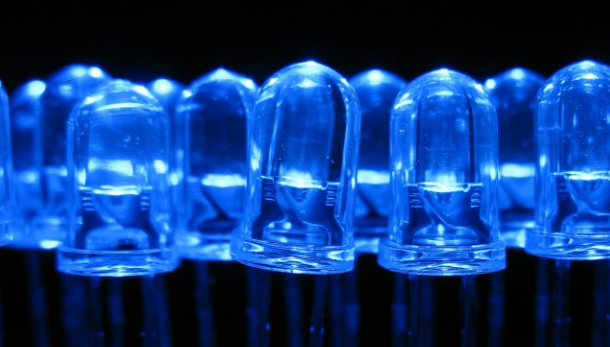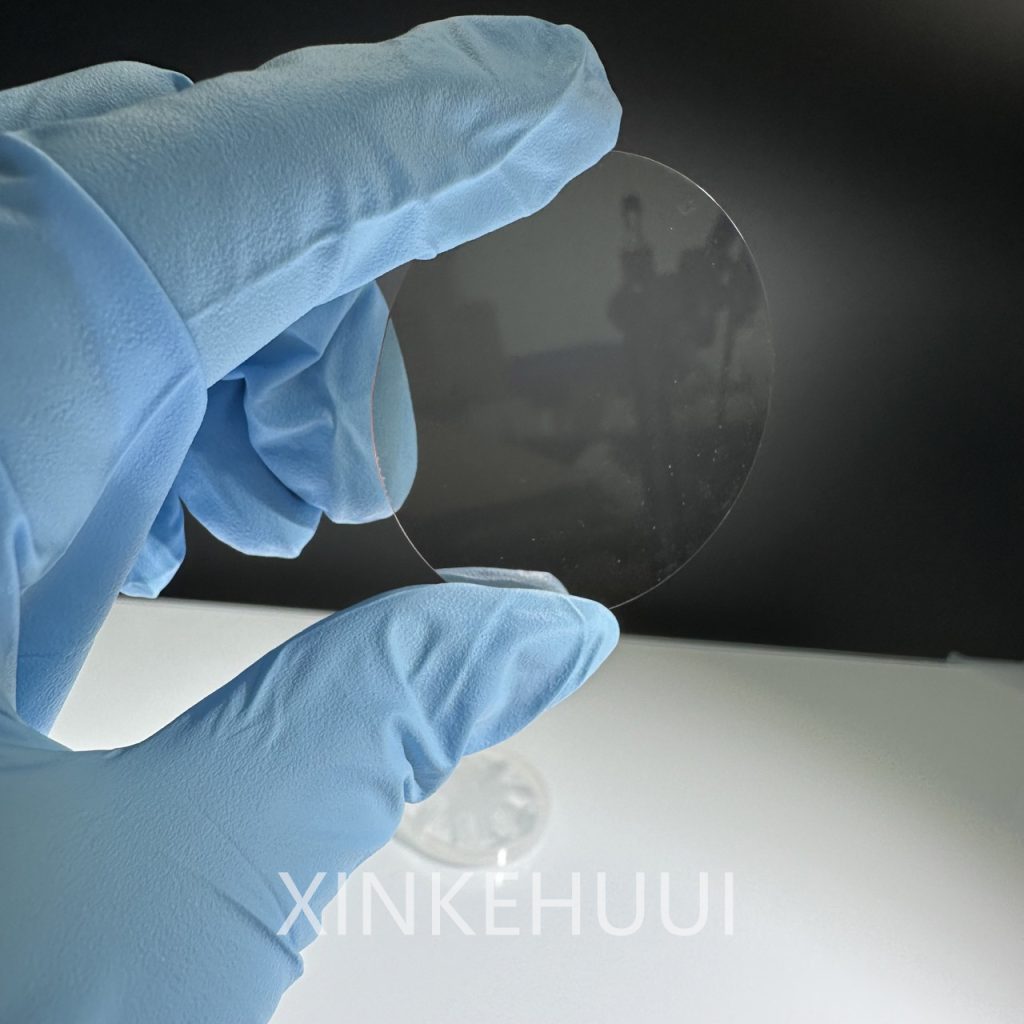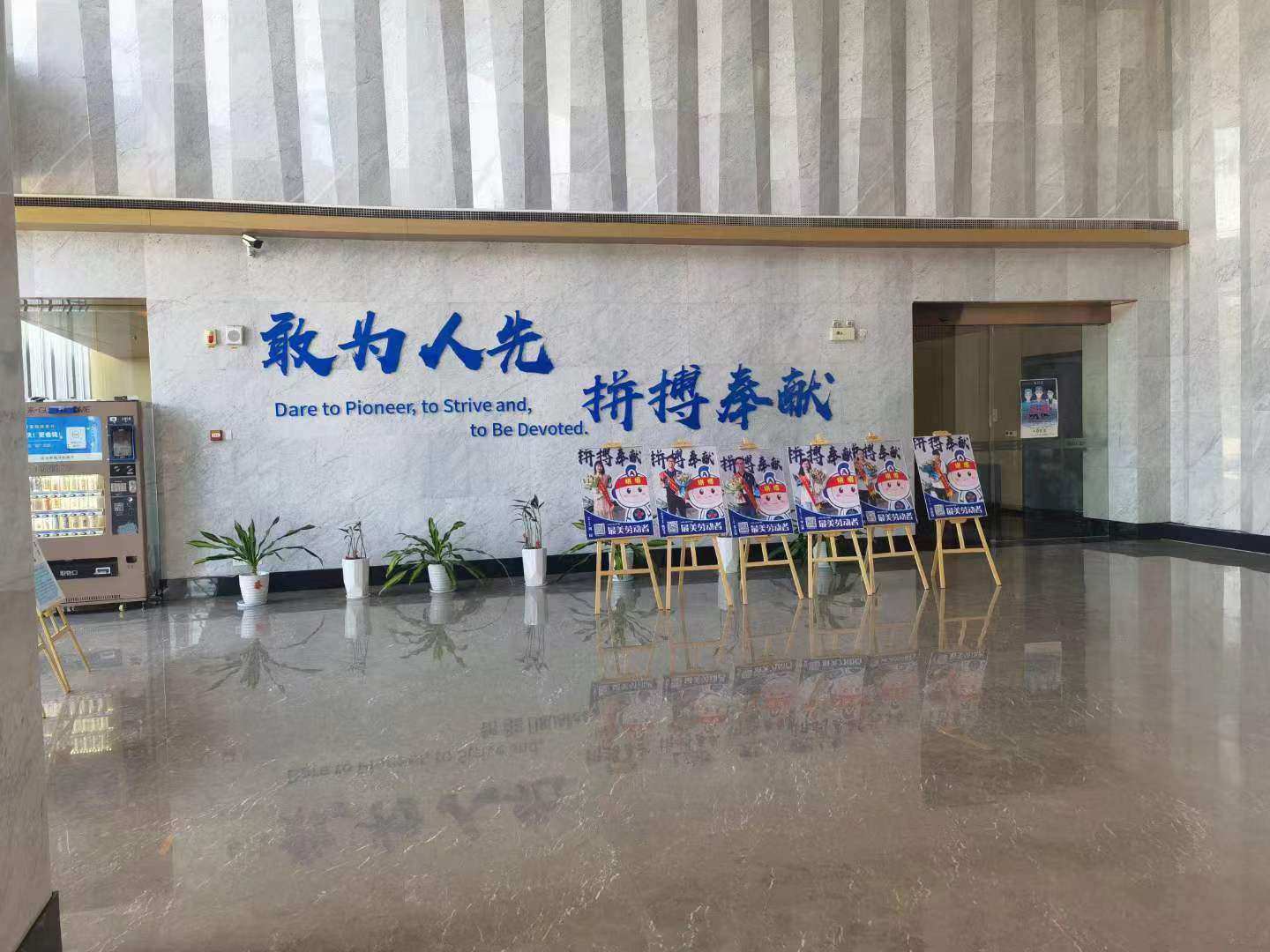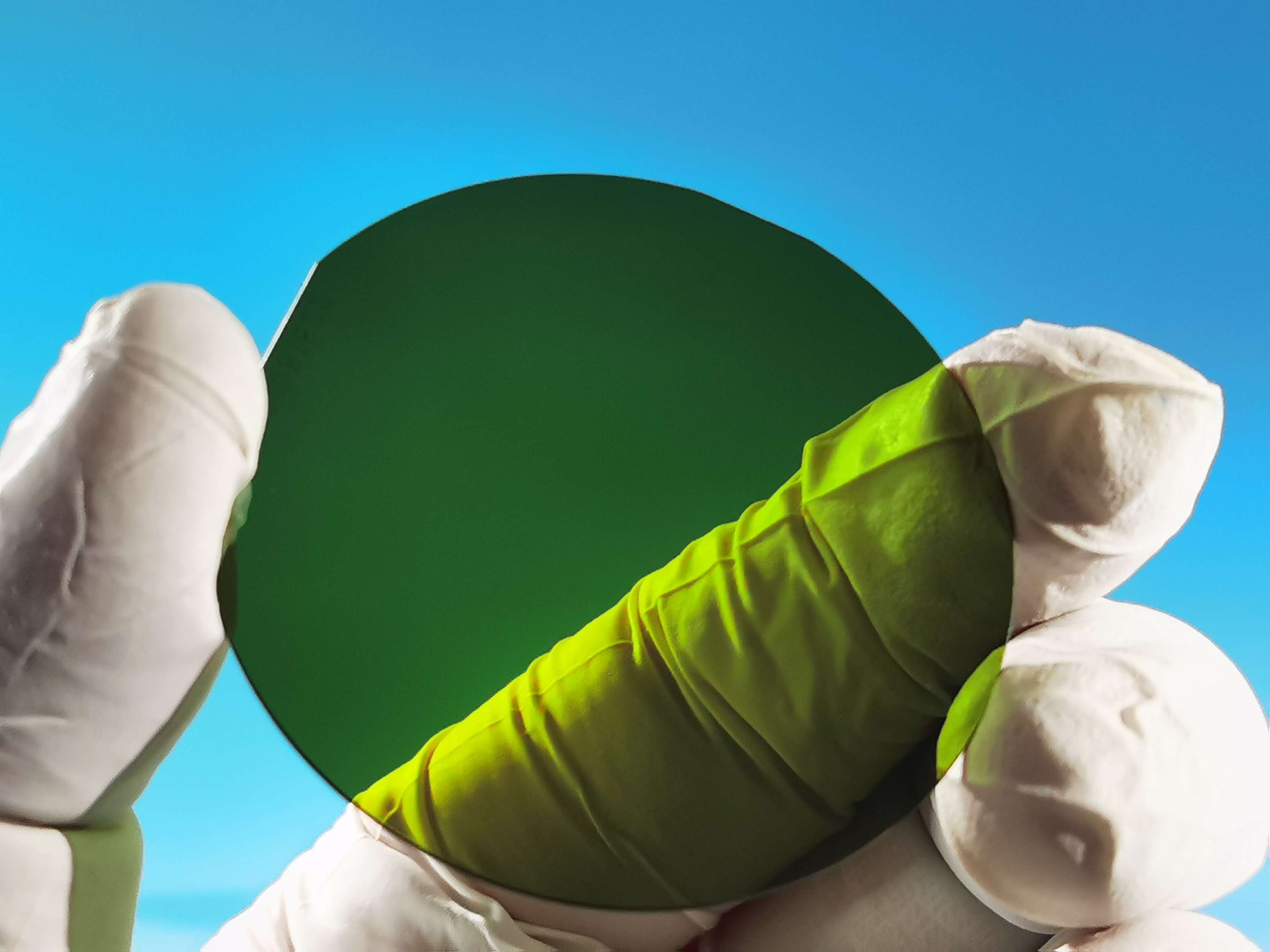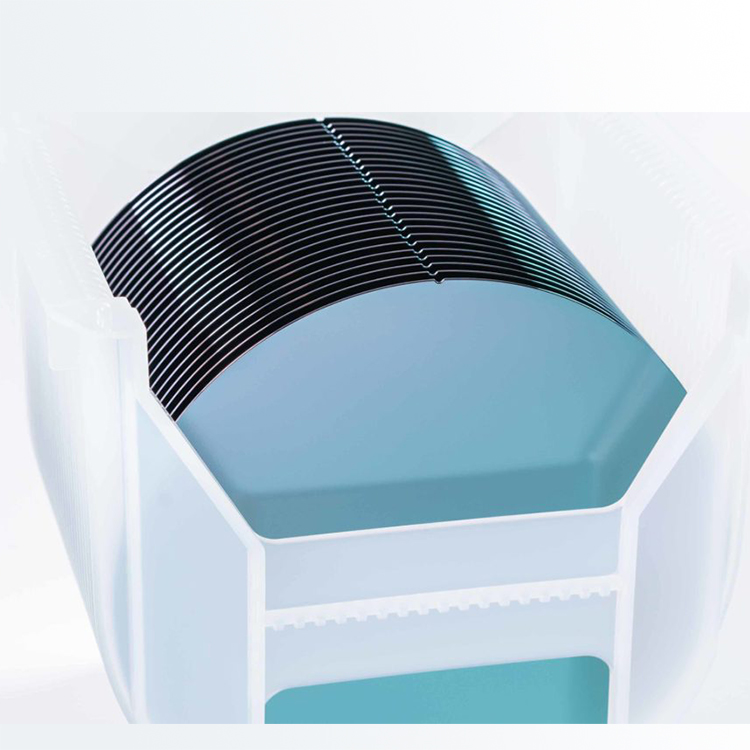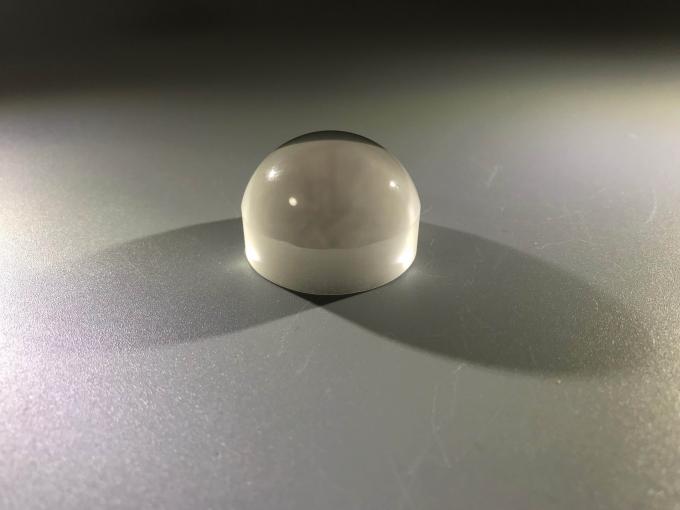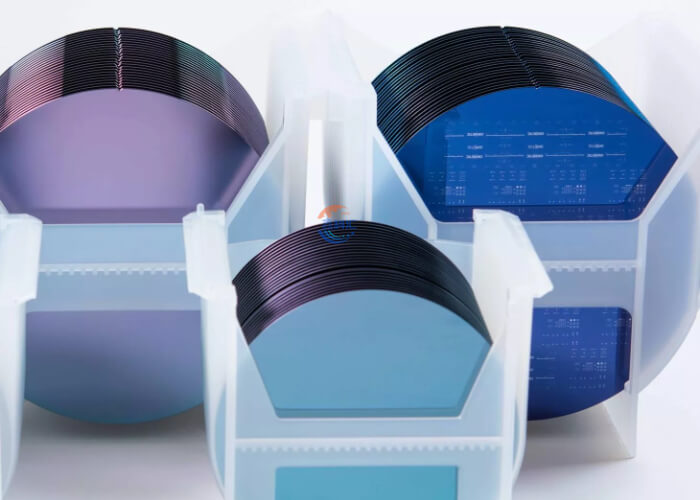4H Semi-insulating SiC substarte/wafer ‘s abstract

The 4H Semi-insulating Silicon Carbide (SiC) substrate/wafer stands as a cornerstone in the realm of advanced electronic device manufacturing. This product summary delves into its physical characteristics, elucidating the intricate details that define its performance and utility in various applications.
Crystal Structure: The 4H Semi-insulating SiC substrate boasts a hexagonal crystal structure, denoted as 4H-SiC. This crystalline arrangement provides inherent advantages in electronic applications, contributing to the material’s high breakdown voltage and excellent thermal conductivity.
Conductivity: Distinguishing itself as semi-insulating, this SiC substrate exhibits properties that lie between those of conductors and insulators. The controlled level of electrical conductivity makes it ideal for high-power and high-frequency electronic devices, striking a delicate balance between performance and insulation.
Diameter: Available in various diameters, such as 2 inches, 3 inches, 4 inches, and beyond, these substrates cater to diverse fabrication requirements, offering flexibility in device design and manufacturing processes.
Thickness: The thickness of the 4H SiC substrate is specified in micrometers, influencing its mechanical and thermal characteristics. Precision in thickness ensures uniformity and reliability in device fabrication.
Orientation: The crystal orientation, often specified as (0001), signifies the alignment of the crystal lattice. This orientation plays a crucial role in determining the material’s electronic and optical properties.
Carrier Concentration: The semi-insulating nature of the substrate is characterized by a low carrier concentration, typically expressed in cm^(-3). This parameter influences the electrical behavior and performance of electronic devices.
Stacking Fault Density: The stacking fault density is a measure of crystal imperfections in the lattice structure. A lower stacking fault density indicates a higher crystal quality, influencing the material’s overall reliability and performance.
Surface Roughness: The substrate’s surface roughness, measured in angstroms, reflects the smoothness of the material’s surface. Low surface roughness is essential for ensuring proper adhesion and uniformity in device fabrication.
Impurity Concentrations: The substrate may contain controlled impurity concentrations, such as nitrogen and aluminum, influencing the material’s electronic properties. Precise control over impurity levels is crucial for tailoring the substrate to specific device requirements.
Carrier Mobility: Carrier mobility, a key parameter, denotes the ability of charge carriers to move through the material. High carrier mobility is essential for achieving fast and efficient electronic device operation.
Dielectric Constant: The dielectric constant characterizes the material’s ability to insulate against electrical conductivity. A stable and well-defined dielectric constant is imperative for ensuring the substrate’s insulating properties.
In conclusion, the 4H Semi-insulating SiC substrate/wafer, with its distinct physical characteristics, emerges as a critical component in the advancement of electronic technologies. As a foundation for high-performance devices, its unique combination of crystal structure, conductivity, and controlled parameters positions it at the forefront of modern semiconductor applications. Whether utilized in power electronics, high-frequency devices, or other cutting-edge technologies, the 4H SiC substrate stands as a testament to the continual evolution of materials for the demands of the digital era.
SiC substarte/wafer ‘s data sheet
4 inch diameter Silicon Carbide (SiC) Crystal Substrate, SiC Wafers Specifications
| Grade | Zero MPD Grade | Production Grade | Research Grade | Dummy Grade | |
| Diameter | 100.0 mm +/- 0.5 mm | ||||
| Thickness | 500 um +/- 25 um (semi-insulating type), 350 um +/- 25 um (N type) | ||||
| Wafer Orientation | On axis: <0001> +/- 0.5 deg for 4H-SIOff axis: 4.0 deg toward <11-20> +/-0.5 deg for 4H-N | ||||
| Micropipe Density (MPD) | 1 cm-2 | 5 cm-2 | 15 cm-2 | 30 cm-2 | |
| Electrical Resistivity(Ohm-cm) | 4H-N | 0.015~0.028 | |||
| 4H-SI | >1E5 | ||||
| Doping Concentration | N-type: ~ 1E18/cm3SI-type (V-doped): ~ 5E18/cm3 | ||||
| Primary Flat | {10-10} +/- 5.0 deg | ||||
| Primary Flat Length | 32.5 mm +/- 2.0 mm | ||||
| Secondary Flat Length | 18.0 mm +/- 2.0 mm | ||||
| Secondary Flat Orientation | Silicon face up: 90 deg CW from Primary flat +/- 5.0 deg | ||||
| Edge exclusion | 3 mm | ||||
| LTV/TTV /Bow /Warp | 10um /15um /25um /40um | ||||
| Surface Roughness | Optical Polish Ra < 1 nm on the C face | ||||
| CMP Ra < 0.5 nm on the Si face | |||||
| Cracks inspected by high intensity light | None | None | 1 allowed, 1 mm | 1 allowed, 2 mm | |
| Hex Plates inspected by high intensity light* | Cumulative area 1 % | Cumulative area 1 % | Cumulative area 1 % | Cumulative area 3 % | |
| Polytype Areas inspected by high intensity light* | None | None | Cumulative area 2% | Cumulative area 5% | |
| Scratches inspected by high intensity light** | 3 scratches to 1 x wafer diameter Cumulative length | 3 scratches to 1 x wafer diameter Cumulative length | 5 scratches to 1 x wafer diameter Cumulative length | 5 scratches to 1 x wafer diameter Cumulative length | |
| Edge chipping | None | None | 3 allowed, 0.5 mm each | 5 allowed, 1 mm each | |
| Surface Contamination as inspected by high intensity light | None | ||||
4H Semi-insulating SiC substarte/wafer’s showcase






4H Semi-insulating SiC substarte/wafer’s application
The 4H Semi-insulating Silicon Carbide (SiC) substrate/wafer is a pivotal component in various cutting-edge applications, leveraging its unique properties to enhance the performance and reliability of electronic devices. This comprehensive exploration delves into the diverse realms where the 4H SiC substrate finds application, showcasing its versatility and impact across multiple industries.
1. Power Electronics: One of the primary domains where 4H SiC substrates shine is in power electronics. The material’s high breakdown voltage, thermal conductivity, and semi-insulating nature make it ideal for manufacturing power devices such as Schottky diodes, MOSFETs, and insulated-gate bipolar transistors (IGBTs). These devices, utilizing 4H SiC substrates, exhibit superior efficiency and reduced power losses, revolutionizing the power electronics landscape.
2. High-Frequency Devices: The exceptional electronic properties of 4H SiC, including high electron mobility and saturation drift velocity, position it as a key player in the development of high-frequency devices. RF (Radio Frequency) devices, microwave systems, and communication equipment benefit from the substrate’s ability to handle high-frequency signals with low losses, enabling advancements in telecommunications and wireless technologies.
3. Optoelectronics and Photonics: In the realm of optoelectronics, 4H SiC substrates contribute to the development of light-emitting diodes (LEDs) and photodetectors. The material’s wide bandgap and thermal stability enable the creation of high-brightness LEDs with enhanced efficiency. Additionally, its compatibility with visible and ultraviolet light makes it valuable in photonic applications, paving the way for innovations in sensors and imaging devices.
4. Aerospace and Defense: The aerospace and defense industries leverage the rugged and high-temperature capabilities of 4H SiC substrates. These substrates play a vital role in the production of electronic components for aircraft, satellites, and military applications. Their resilience to harsh environmental conditions and radiation, coupled with high-temperature stability, ensures reliable performance in demanding aerospace and defense systems.
5. Automotive Electronics: As the automotive industry embraces electrification and autonomous technologies, 4H SiC substrates find application in electric vehicle (EV) power electronics. Components like inverters and power modules benefit from the material’s efficiency and compact design, contributing to the development of energy-efficient and high-performance electric vehicles.
6. Renewable Energy: In the field of renewable energy, 4H SiC substrates contribute to the advancement of solar inverters and wind power converters. The material’s ability to withstand high temperatures and voltage fluctuations enhances the reliability and efficiency of power conversion systems in renewable energy applications, facilitating the transition to sustainable energy sources.
7. Research and Development: The scientific community extensively utilizes 4H SiC substrates for research and development in various disciplines. From semiconductor physics to materials science, the substrate’s properties make it an invaluable tool for exploring new technologies and pushing the boundaries of scientific understanding.
8. Medical Electronics: In medical electronics, 4H SiC substrates play a role in the development of high-performance sensors and imaging devices. The material’s biocompatibility, stability, and sensitivity contribute to advancements in medical diagnostics, imaging, and therapeutic equipment.
Conclusion: The 4H Semi-insulating SiC substrate/wafer stands at the forefront of technological advancements, influencing diverse industries with its remarkable properties. From powering the next generation of electronic devices to contributing to sustainable energy solutions, the applications of 4H SiC substrates continue to expand, driving innovation and progress in the ever-evolving landscape of advanced technologies.
4H Semi-insulating SiC substarte/wafer’s feature
The 4H Semi-insulating Silicon Carbide (SiC) substrate/wafer stands as a technological cornerstone, boasting a plethora of features that make it a key player in the realm of advanced electronics. This comprehensive exploration unveils the distinctive characteristics of the 4H SiC substrate, shedding light on the attributes that propel it to the forefront of diverse applications across industries.
1. Crystal Structure: At the heart of the 4H SiC substrate’s exceptional properties is its hexagonal crystal structure, denoted as 4H-SiC. This crystalline arrangement imparts inherent advantages, including high thermal conductivity, mechanical stability, and a wide bandgap, making it well-suited for demanding electronic applications.
2. Semi-insulating Nature: A defining feature of the 4H SiC substrate is its semi-insulating behavior. This unique property positions it between conductors and insulators, offering controlled electrical conductivity. The semi-insulating nature is particularly advantageous in high-power electronic devices, where minimizing electrical leakage and optimizing performance are paramount.
3. High Breakdown Voltage: The substrate exhibits a high breakdown voltage, a critical parameter in power electronics. This feature ensures that the material can withstand substantial electrical stress, contributing to the reliability and durability of power devices such as diodes and transistors.
4. Wide Bandgap: With a wide bandgap, the 4H SiC substrate excels in high-temperature and high-power applications. The wide bandgap allows the material to operate at elevated temperatures while maintaining stable electrical properties, making it suitable for harsh environments and demanding electronic circuits.
5. Excellent Thermal Conductivity: Exceptional thermal conductivity is a hallmark of the 4H SiC substrate. This property facilitates efficient heat dissipation in electronic devices, preventing overheating and ensuring long-term reliability. The substrate’s ability to handle high thermal loads makes it indispensable in power modules and high-frequency applications.
6. Low Defect Density: The 4H SiC substrate exhibits low defect density, signifying a high-quality crystal lattice. This characteristic is crucial for the performance and reliability of electronic devices, minimizing the impact of crystal imperfections on device functionality.
7. Chemical Stability: The substrate demonstrates chemical stability, resisting reactions with a wide range of chemicals. This attribute is advantageous in various applications, including those where exposure to corrosive environments is a concern.
8. High Electron Mobility: The high electron mobility of 4H SiC contributes to its suitability for high-frequency electronic devices. This feature enables fast and efficient electron transport, making it instrumental in the development of RF devices and communication systems.
9. Compatibility with Harsh Environments: The robust nature of the 4H SiC substrate makes it compatible with harsh operating conditions, including high temperatures, radiation, and aggressive chemical environments. This resilience expands its applicability in aerospace, defense, and other challenging settings.
10. Precision in Thickness and Diameter: Manufactured with precision, the 4H SiC substrate is available in various diameters and thicknesses. This variability allows customization to meet specific device requirements, providing flexibility in design and fabrication processes.
11. Versatility in Applications: The 4H SiC substrate finds widespread use in diverse applications, spanning power electronics, high-frequency devices, optoelectronics, aerospace, automotive electronics, renewable energy, and more. Its versatility stems from a combination of its unique features, enabling innovation across multiple industries.
12. Emerging Technological Impact: As an enabler of emerging technologies, the 4H SiC substrate plays a pivotal role in the advancement of electric vehicles, 5G communication, and renewable energy solutions. Its features align with the demands of the digital era, driving progress in technology and shaping the future of electronic devices.
Conclusion: The features of the 4H Semi-insulating SiC substrate/wafer collectively create a technological foundation that is reshaping the landscape of electronic devices. From its crystal structure to its wide-ranging applications, each feature contributes to the substrate’s significance in powering the innovations of today and tomorrow. As technology continues to evolve, the 4H SiC substrate stands as a testament to the continual pursuit of excellence in materials science and electronics.
Prospects of SiC Substrate/Wafer: Pioneering the Future of Advanced Electronics
The Silicon Carbide (SiC) substrate/wafer has emerged as a cornerstone in the evolution of advanced electronics, promising a transformative impact across various industries. This comprehensive exploration delves into the high-frequency keywords associated with SiC substrate/wafer to illuminate its promising prospects, unveiling a trajectory that encompasses power electronics, renewable energy, automotive technology, and beyond.
1. Power Electronics Revolution: The SiC substrate’s journey is intricately tied to the power electronics revolution. Its high-frequency characteristics, coupled with low switching losses, herald a paradigm shift in the design and efficiency of power devices. As the demand for energy-efficient solutions intensifies, SiC substrates are poised to dominate the landscape of power electronics.
2. Electric Vehicle Propulsion: In the realm of automotive technology, SiC substrates are pivotal components in the development of electric vehicles (EVs). The keywords here include “SiC inverter” and “SiC power module.” These substrates, with their ability to handle high temperatures and high voltages, contribute to the realization of compact, lightweight, and energy-efficient EV powertrains.
3. High-Frequency Applications: SiC substrates shine in high-frequency applications, catering to the demands of 5G technology and beyond. The frequency-related keywords such as “RF devices,” “microwave systems,” and “communication equipment” underscore the substrate’s role in advancing high-frequency electronic devices, paving the way for faster communication and data transfer.
4. Renewable Energy Integration: As the world transitions towards renewable energy sources, SiC substrates play a crucial role in renewable energy systems. The keywords “solar inverters” and “wind power converters” highlight their contribution to efficient power conversion, ensuring the seamless integration of solar and wind energy into the grid.
5. Aerospace and Defense Applications: SiC substrates are making inroads into aerospace and defense applications, where keywords like “harsh environments,” “high-temperature stability,” and “radiation resistance” emphasize their resilience. From satellites to military electronics, SiC substrates promise reliability in demanding conditions.
6. Semiconductor Industry Advancements: Keywords like “SiC devices” and “SiC technology” underscore the SiC substrate’s role in propelling advancements in the semiconductor industry. Its high breakdown voltage, low defect density, and wide bandgap contribute to the development of novel semiconductor devices, expanding the horizons of electronic capabilities.
7. Optoelectronics and Photonics Innovations: In optoelectronics and photonics, SiC substrates play a vital role in the creation of advanced light-emitting diodes (LEDs) and photodetectors. The keywords “biocompatible,” “sensors,” and “imaging devices” signal their contribution to medical diagnostics and imaging technologies.
8. Research and Development Frontiers: SiC substrates are at the forefront of research and development, evident in the keywords “scientific exploration” and “materials science.” Researchers leverage the unique properties of SiC substrates to push the boundaries of technology, uncovering new possibilities in various scientific disciplines.
9. Quantum Technologies Exploration: As quantum technologies gain prominence, SiC substrates become integral to quantum information science. Keywords like “quantum applications” and “quantum sensors” highlight their potential in advancing quantum computing and sensing technologies.
10. Integration in Smart Grids: The keywords “smart grids” and “SiC power devices” point towards SiC substrates’ role in modernizing power distribution systems. Their efficiency and reliability contribute to the development of smart grids, facilitating dynamic energy management and grid resilience.
Conclusion: The prospects of SiC substrates are woven into the fabric of technological advancement, with high-frequency keywords reflecting their pivotal role across diverse domains. From powering electric vehicles to enabling high-frequency communication and advancing quantum technologies, SiC substrates stand poised to shape the future of advanced electronics. As innovation continues to unfold, the keywords associated with SiC substrates echo a narrative of progress, resilience, and transformative potential.

